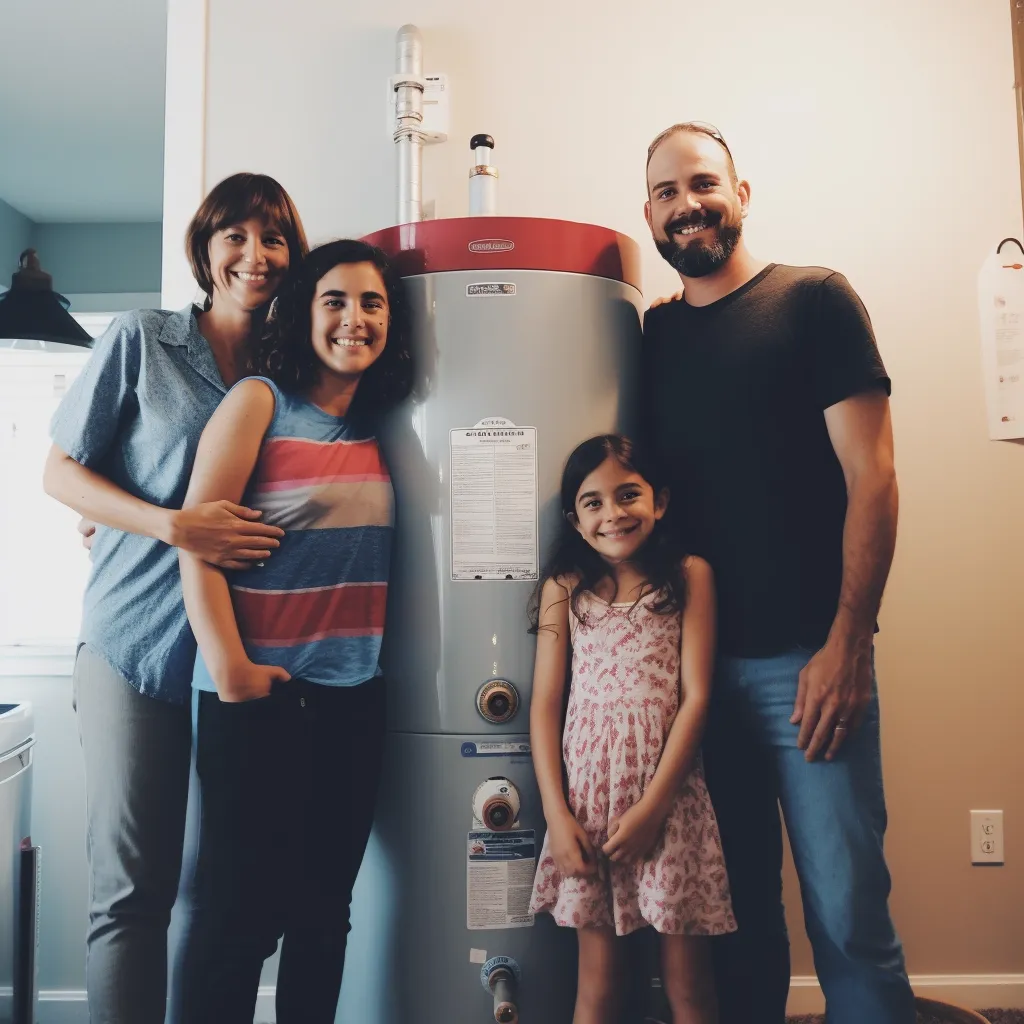A Comprehensive Guide to Water Heater Installation for Plano Homeowners

Replacing a residential water heater is a significant home improvement project that every homeowner may need to tackle at some point. Whether your old unit has given up the ghost or you're looking to upgrade to a more energy-efficient model, knowing what to expect during the water heater installation process is crucial. In this comprehensive guide, we will walk you through the entire journey, from selecting the right unit to the final installation.
Assess Your Needs and Choose the Right Water Heater
Before diving into the installation process, the first and most critical step is to assess your hot water needs and choose the right water heater. Here are the key factors to consider:
Capacity: Determine the size of the water heater you need based on the number of people in your household and their hot water usage. A family of four, for example, typically requires a 40 to 50-gallon tank.
Fuel Type: Decide between gas, electric, or tankless water heaters. Gas heaters are energy-efficient but require a gas supply, while electric heaters are easy to install and suitable for smaller households. Tankless heaters provide on-demand hot water but may have a higher upfront cost.
Energy Efficiency: Look for water heaters with high Energy Factor (EF) ratings, as they can save you money on energy bills over time. Energy Star certified models are a good choice for efficiency.
Location: Consider the space available for your new water heater. Make sure it fits within your designated installation area and meets local building code requirements.
Budget: Determine your budget for the replacement, factoring in the cost of the unit, installation, and any additional necessary components.
Brand and Warranty: Research reputable brands and choose a water heater with a substantial warranty for peace of mind.
Gather the Necessary Tools and Materials
Before you start the installation process, make sure you have all the required tools and materials on hand. Here's a checklist:
New Water Heater: Ensure it matches your selected specifications. Wrenches and Pliers: For disconnecting old plumbing connections.
Pipe Cutter: To cut and prepare new pipes if needed.
Pipe Thread Sealant: For securing connections and preventing leaks.
Gas Line or Electrical Wiring: Depending on your unit, ensure you have the necessary connections. Teflon Tape: To seal threaded connections.
Pipe Fittings: If your plumbing needs modifications.
Bucket and Towels: To catch any water or debris during the removal process.


Shut Off Utilities and Drain the Old Water Heater
Before removing the old water heater, you must turn off the utilities and drain the existing unit properly:
Gas Water Heater: Turn off the gas supply valve.
Electric Water Heater: Switch off the power at the circuit breaker.
Water Supply: Shut off the cold water supply valve.
Pressure Relief Valve: Open the pressure relief valve to release any pressure and prevent accidents.
Drain Valve: Connect a garden hose to the drain valve and direct it to a suitable drainage location. Open the valve to empty the tank.
Disconnect and Remove the Old Water Heater
Now that your old water heater is empty and utilities are disconnected, it's time to remove it:
Disconnect Plumbing: Use wrenches and pliers to disconnect the hot and cold water pipes.
Disconnect Gas Line: If applicable, disconnect the gas line using a wrench.
Disconnect Electrical Wiring: If you have an electric water heater, disconnect the wiring carefully.
Remove Old Unit: With all connections detached, carefully remove the old water heater from its location.
Prepare for the New Water Heater
Before installing the new water heater, ensure the installation area is ready:
Clear Space: Remove any debris or obstacles from the installation area.
Platform or Stand: Place the new unit on a stable platform or stand if required.
T&P Valve: Install a new temperature and pressure relief valve if necessary.
Install the New Water Heater
Now, it's time to install your new water heater:
Positioning: Carefully position the new unit in the desired location.
Connect Plumbing: Reconnect the hot and cold water pipes using pipe thread sealant.
Connect Gas Line or Electrical Wiring: Depending on the unit, connect the gas line or electrical wiring.
Tighten Connections: Use wrenches and pliers to ensure all connections are secure.
Ventilation: Ensure proper ventilation for gas water heaters, following local building codes.
Fill the Tank: Open the cold water supply valve and allow the tank to fill completely.
Check for Leaks: Inspect all connections for leaks and address them immediately if found.
Reconnect Utilities and Test
With the new water heater in place, it's time to reconnect utilities and test the unit:
Gas Water Heater: Turn on the gas supply and follow the manufacturer's instructions for lighting the pilot.
Electric Water Heater: Restore power at the circuit breaker.
Water Supply: Fully open the cold water supply valve.
Pressure Relief Valve: Close the pressure relief valve when water flows steadily from it.
Check for Leaks: Once again, inspect all connections for leaks.
Set the Temperature and Adjust as Needed
Temperature Setting: Adjust the water heater's temperature to your desired level, typically between 120°F and 140°F.
Wait for Hot Water: Be patient, as it may take some time for the water heater to heat up the water.
Flush Tank: Periodically flush the tank to remove sediment and maintain efficiency.
Regular Maintenance for a Long Lifespan
Now that your new water heater is installed, it's crucial to perform regular maintenance to extend its lifespan and ensure efficient operation. Here's what you should do:
Flush the tank annually to remove sediment buildup: This helps maintain heating efficiency and prevents corrosion.
Test the temperature and pressure relief valve: Test by lifting the lever once a year to ensure it's functioning correctly.
Inspect anode rod: Inspect the anode rod every two to three years and replace it if it's heavily corroded. The anode rod helps prevent rust inside the tank.
Regularly check for any signs of leaks, corrosion, or unusual noises: Address any issues promptly to prevent major problems.
Consider installing a water softener if you have hard water: This can reduce mineral buildup in the tank.
Take the Time to Care for Your New Water Heater
Replacing a residential water heater involves several steps, from selecting the right unit to proper installation. By carefully assessing your needs, choosing the appropriate type and size of water heater, and following the installation steps, you can ensure a successful replacement project.
Moreover, don't underestimate the importance of regular maintenance in prolonging the lifespan of your water heater. Performing annual maintenance tasks and addressing any issues promptly will help you enjoy reliable hot water for years to come while minimizing the risk of costly repairs or replacements. Remember, a well-maintained water heater not only saves you money on energy bills but also contributes to the comfort and convenience of your home. So, take the time to care for your water heater, and it will reward you with reliable hot water for years to come.

Contact Us
GET IN FULL TOUCH
PHONE (469) 838-5525
EMAIL:
jason@waterheatersinplanocom
Evolution Plumbing
Plano, TX 75023
Texas Plumbers License: M-44821
